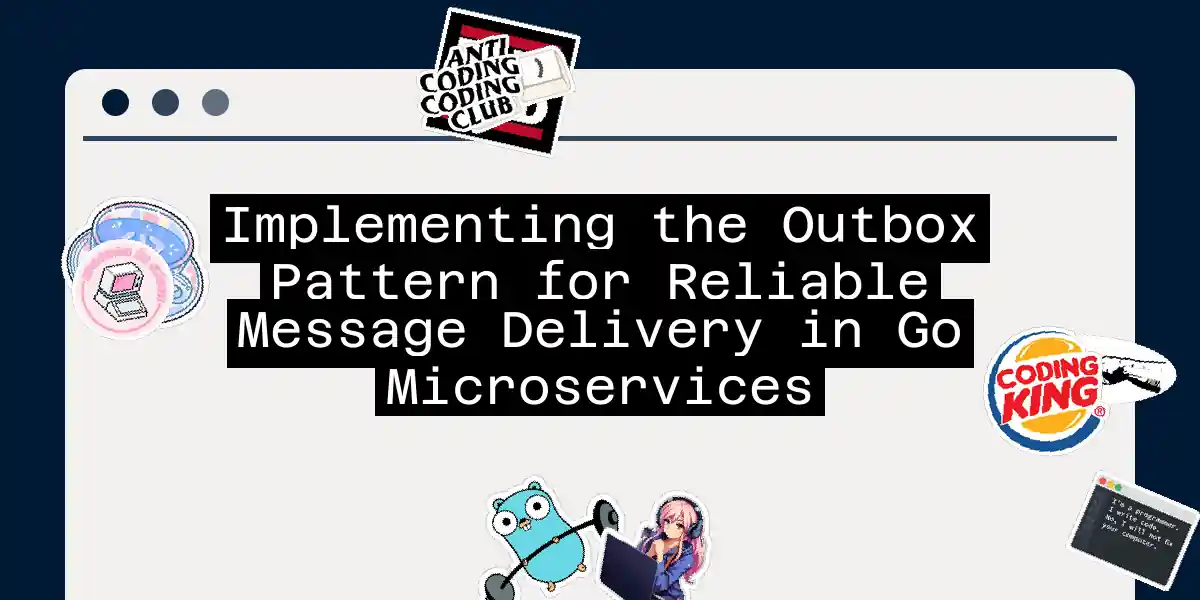Introduction to the Outbox Pattern
In the world of microservices, ensuring reliable message delivery is akin to navigating a minefield blindfolded. You never know when a message might get lost in the void, leaving your system in an inconsistent state. This is where the Outbox pattern comes to the rescue, providing a robust solution to guarantee that your messages are delivered, no matter what.
The Problem
Imagine you’re in a happy path scenario where everything works smoothly: your service performs a database transaction and then sends a message to another service or a message broker. However, things can quickly go awry. If the transaction succeeds but the message fails to reach its destination, you’re left with an inconsistent system. Conversely, if the transaction fails after the message has been sent, you might end up with duplicate messages or lost data.
What is the Outbox Pattern?
The Outbox pattern is a clever technique to ensure that messages are delivered reliably by storing them in a database table before sending them. Here’s how it works:
Introduce an Outbox Table: Create a table in your database to store messages intended for delivery. This table is part of the same database as your application’s data.
Store Messages in the Outbox: Instead of directly sending messages, insert them into the outbox table as part of a database transaction. This ensures that the message is persisted even if the service crashes or the transaction fails.
Background Worker Process: Implement a background worker process that periodically polls the outbox table. If it finds an unprocessed message, it sends the message and marks it as sent. If sending the message fails, the worker can retry in the next round.
Benefits of the Outbox Pattern
- Improved Reliability: Messages are stored in durable storage, ensuring they are not lost even if the service fails.
- Consistency: The pattern ensures that messages are either sent or not, maintaining the integrity of your message delivery.
- Simplified Architecture: The outbox pattern decouples message sending from the business logic, making the architecture easier to understand and maintain.
Implementing the Outbox Pattern in Go
Let’s dive into a practical example of how to implement the Outbox pattern in a Go microservice.
Step 1: Create the Outbox Table
First, you need to create a table in your database to store the messages. Here’s an example using MongoDB:
type OutboxDocument struct {
ID primitive.ObjectID `bson:"_id,omitempty"`
Type string `bson:"type"`
Event []byte `bson:"event"`
SentAt *time.Time `bson:"sent_at,omitempty"`
}
Step 2: Insert Messages into the Outbox
When your service needs to send a message, it inserts a record into the outbox table as part of a database transaction:
func Publish(coll *mongo.Collection, doc *OutboxDocument) error {
_, err := coll.InsertOne(context.Background(), &doc)
if err != nil {
log.Fatal(err)
}
return nil
}
Step 3: Create a Background Worker
Implement a background worker that periodically checks the outbox table and sends any unprocessed messages:
func StartOutboxProcessor(coll *mongo.Collection, sender func(*OutboxDocument) error) {
ticker := time.NewTicker(1 * time.Minute)
defer ticker.Stop()
for range ticker.C {
var docs []OutboxDocument
cursor, err := coll.Find(context.Background(), bson.M{"sent_at": nil})
if err != nil {
log.Println(err)
continue
}
err = cursor.All(context.Background(), &docs)
if err != nil {
log.Println(err)
continue
}
for _, doc := range docs {
err = sender(&doc)
if err != nil {
log.Printf("Failed to send message %s: %v\n", doc.ID, err)
continue
}
_, err = coll.UpdateOne(context.Background(), bson.M{"_id": doc.ID}, bson.M{"$set": bson.M{"sent_at": time.Now()}})
if err != nil {
log.Printf("Failed to mark message %s as sent: %v\n", doc.ID, err)
}
}
}
}
Example Usage
Here’s how you might use this in your Go service:
func main() {
// Initialize MongoDB client and collection
client, err := mongo.Connect(context.Background(), options.Client().ApplyURI("mongodb://localhost:27017"))
if err != nil {
log.Fatal(err)
}
coll := client.Database("mydb").Collection("outbox")
// Start the outbox processor
go StartOutboxProcessor(coll, func(doc *OutboxDocument) error {
// Simulate sending the message
log.Printf("Sending message %s\n", doc.ID)
return nil
})
// Publish a message
doc := &OutboxDocument{Type: "example", Event: []byte("Hello, World")}
err = Publish(coll, doc)
if err != nil {
log.Fatal(err)
}
}
Handling Duplicate Messages
One of the challenges with the Outbox pattern is handling duplicate messages. Since the pattern ensures at-least-once delivery, you might receive the same message multiple times. To mitigate this, you can make your processing idempotent or implement a deduplication mechanism.
Conclusion
The Outbox pattern is a powerful tool in your microservices toolkit, ensuring that messages are delivered reliably even in the face of failures. By storing messages in a database table and using a background worker to send them, you decouple message delivery from your business logic, making your system more robust and easier to maintain.
Remember, in the world of distributed systems, reliability is key. With the Outbox pattern, you can sleep better knowing that your messages will eventually reach their destination, no matter what obstacles come their way. Happy coding
